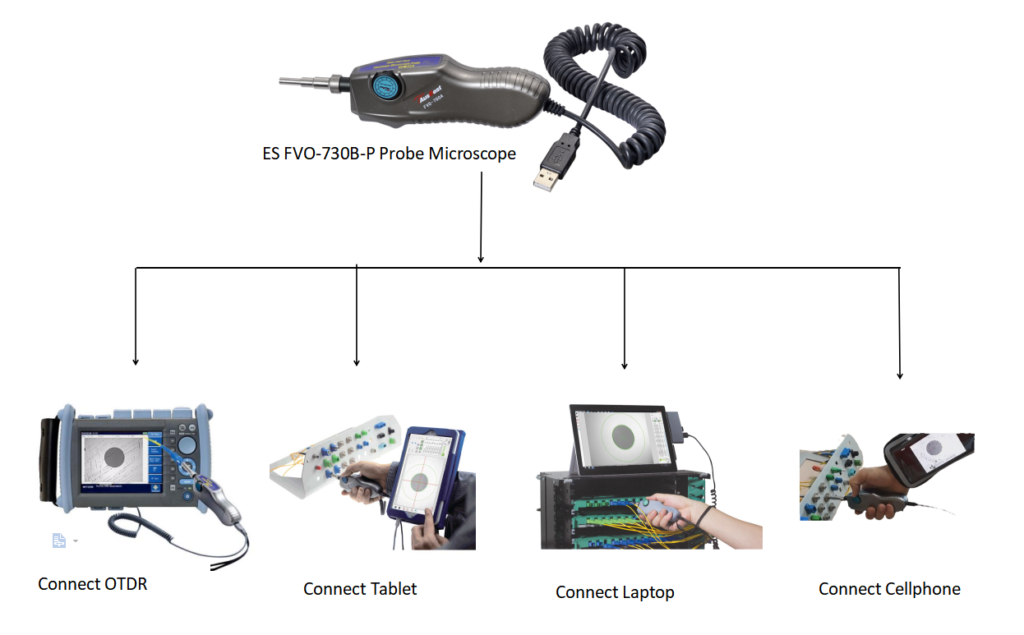The loss and reflection in the optical fiber transmission link, as well as breakpoints and other fault locations, can not be tested separately without the handy OTDR reflector. With the continuous upgrading of large capacity and high-speed transmission, the requirement of optical fiber transmission quality is more and more high and strict. For example, 5G network requirements of low-delay indicators, all rely on high-quality optical transmission speed to do the basic guarantee. Thereby the loss and reflection are the root cause of all failures in an optical network, and correspondingly the only exposed fiber end face in the optical fiber link may be the root cause for all.
During the fiber link installation, repair, maintenance, and troubleshooting process, it’s often found the bare fiber end. Some are contaminated, scratched or bruised, and so on. But whatever kinds of defect, there will be 85% possibility to bring various types of faults to the transmission network, such as signal attenuation delay, dispersion error code, wavelength shift, phase shift, and so on, which will affect the transmission performance finally. There’s no doubt it has long been confirmed by some related investigation agencies and labs.
Therefore, the tolerance of a high-standard optical transmission network to the defect end face is zero. It must be verified in accordance with IEC or IPC International Standards. The inspection of bare fiber ends in optical links should be counted as the first priority.
OTDR, like many other test tools, is unable to accurately detect the loss or reflection value caused by a single defected end face, also unable to diagnose the specific condition of the defective end face, unable to detect parameters or diagnose the condition of the end face.
Up until now, the most common and recognized best test tool is the optical fiber end-face electronic microscope inspector, which can magnify the optical fiber end-face 400 times (or 200 times). By taking advantage of the OTDR display screen, small optical fiber (core straight through 0.125 mm) can be extremely showed up. The end surface stains, scratches, or other defects, can be easily identified. Therefore the inspector probe is currently recognized as the best end-face inspection tool, the perfect assistant to the OTDR measurement tools.
Eternal Science (ES) technology is the first professional manufacturer, supplier of optical fiber end-face tester tools and solutions in China for over 20 years. The FVO-730B-P, USB digital end-face Speedy Test detector, is specially developed as the OTDR best work partner, friends. It can be compatible with a lot of OTDR testers, like Anritsu, Yokogawa, Viavi, EXFO, Veex, etc., old branding, also China Grandway, Shineway, Triber, etc., domestic branding. Meantime the total cost is almost a quarter of the branding probe microscope compared to the industry peers.
Except that, the FVO-730B-P SpeedyTest end-face inspection probe can also work with, Android mobile phones, tablets, and laptops to analyze the end face with PASS/FAIL IEC standard.
The operation of the FVO-730B-P SpeedyTest probe is super easy, handy at the same time. With its high-precision alignment performance, together with single-way focus design, tech operators can check the fiber image with speed in 1-3s, figure out the finest scratch, dirt, etc., defects with ease. Together with versatile tips, it can meet 95% of inspection requirements in different scenarios. If say OTDR inspection of loss and reflection is to diagnose network performance, then the purpose of optical fiber end-face detection, we can think like the search, and discover the most hidden disaster in the network. In order to compete for the excellent barrier-free high-speed optical network, OTDR can utilize its greatest advantage equipped with the end-face inspection probe.

